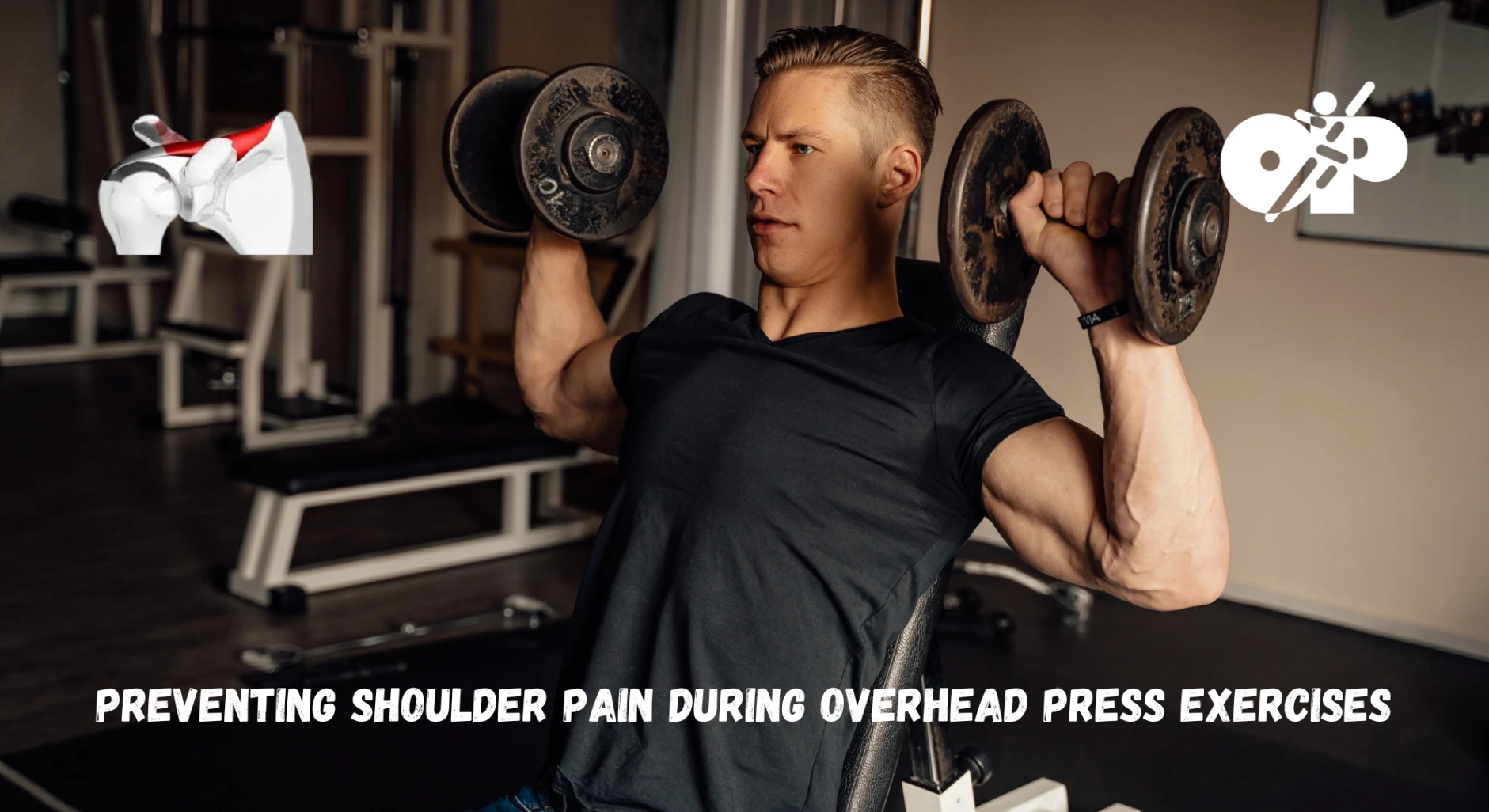The pursuit of physical fitness and strength training has become a cornerstone in the lives of many individuals. With the surge in gym memberships and home fitness enthusiasts, exercises that target key muscle groups, such as the overhead press, have become a fundamental part of many workout routines. However, this increase in activity has also led to a corresponding rise in injuries, particularly in the shoulder area.
The overhead press is a comprehensive exercise that not only builds upper body strength but also promotes functional fitness. Despite its many benefits, shoulder pain has become a prevalent concern among those who frequently engage in overhead press exercises. In fact, studies indicate that shoulder pain is one of the most common complaints related to weightlifting exercises.
This article aims to shed light on the underlying causes of shoulder pain during overhead press exercises and offers insight into prevention strategies. By understanding the intricacies of shoulder anatomy, recognizing common mistakes, and applying proper prevention techniques, readers will gain the knowledge to perform overhead presses safely and effectively.
Anatomy of the Shoulder
The shoulder is a complex joint, comprising various bones, muscles, tendons, and ligaments that allow for a wide range of motion.
At the core of the shoulder’s anatomy lies the glenohumeral joint, where the humerus (upper arm bone) connects to the scapula (shoulder blade). This ball-and-socket joint is supported by several key structures:
Rotator Cuff
A group of four muscles and tendons that stabilize the shoulder joint. These include the supraspinatus, infraspinatus, teres minor, and subscapularis.
Deltoids
The large, triangular muscles that cover the shoulder and provide the power for lifting and pressing movements.
Biceps Tendon
This tendon connects the biceps muscle to the shoulder and assists in lifting and stabilizing the arm.
Ligaments and Capsules
Various ligaments and the joint capsule help hold the shoulder bones in place, providing stability while allowing flexibility.
During the overhead press, many of these structures work in concert. The deltoids, in particular, play a central role in lifting the weight, while the rotator cuff muscles act as stabilizers, keeping the arm and shoulder in proper alignment.
Understanding the anatomy of the shoulder provides essential insights into how to perform overhead presses correctly and safely. It also lays the groundwork for recognizing potential risks and developing strategies to prevent injury.
Benefits and Risks of Overhead Press
Benefits
The overhead press is renowned for its multi-faceted benefits that extend to various aspects of strength and fitness:
Total Upper Body Strength
It targets major muscle groups such as the deltoids, triceps, and traps, contributing to overall upper body power.
Core Activation
Performing the overhead press engages the core muscles, promoting stability and functional strength.
Shoulder Stability and Mobility
By incorporating the shoulder’s entire range of motion, the overhead press can enhance joint mobility and muscular stability.
Metabolic Boost
The compound nature of the overhead press involves multiple joints and muscles, making it an excellent exercise for burning calories and improving metabolic rate.
Risks
Despite these advantages, the overhead press poses certain risks when performed incorrectly or with excessive loading:
Shoulder Injuries Poor technique can strain or tear muscles and tendons within the shoulder, leading to long-term issues.
Spinal Stress
Excessive arching of the back or improper core engagement can place undue stress on the spine.
Wrist and Elbow Strain
Misalignment during the press can also lead to discomfort and injury in the wrists and elbows.
The challenge and opportunity lie in harnessing the benefits of the overhead press while mitigating its potential risks.
Common Causes of Shoulder Pain During Overhead Press
Understanding the common causes of shoulder pain during overhead presses can pave the way for effective prevention and management. Here are the primary contributors:
Incorrect Technique and Form
Importance of Proper Form
Proper technique is paramount in any exercise, and the overhead press is no exception. Improper form can lead to strain and injury in various parts of the shoulder complex.
Common Mistakes
Flaring Elbows
Keeping the elbows too wide puts unnecessary strain on the shoulder joints.
Overarching the Back
This compensation can lead to spinal stress and shifts the load away from the target muscles.
Improper Grip
The wrong grip width or hand position can lead to wrist strain and impede shoulder alignment.
Tips and Guidelines
Keep Elbows Aligned
Elbows should be in line with the wrists, forming a straight path as you press the weight.
Engage the Core
Proper core activation helps maintain spinal alignment.
Use Appropriate Grip Width
Finding the right grip can ease wrist strain and enhance shoulder stability.
Muscle Imbalances and Weaknesses
How Imbalances Contribute to Pain
Muscle imbalances and weaknesses can create instability during overhead presses, forcing compensations that lead to strain and pain. Specific underdeveloped muscles may result in an uneven force distribution.
Specific Muscles to Consider
Rotator Cuff Weakness
Underdeveloped rotator cuff muscles may lead to improper stabilization of the shoulder joint.
Triceps Weakness
If the triceps are weak, the load may shift excessively to the shoulder, increasing the risk of injury.
Exercises and Stretches
Rotator Cuff Strengthening
Exercises like internal and external rotations can enhance rotator cuff stability.
Triceps Building
Targeted triceps exercises such as dips or skull crushers can balance the forces during overhead presses.
Understanding these common causes of shoulder pain, and how to address them, lays the groundwork for safe and effective overhead pressing. By focusing on technique, recognizing imbalances, and implementing targeted exercises, individuals can optimize their performance and minimize injury risk.
Mobility and Flexibility Issues
Role of Shoulder Mobility and Flexibility
Shoulder mobility and flexibility are critical for executing the overhead press with efficiency. Limited range of motion can cause compensatory movements, putting stress on the shoulder, leading to pain.
How Limited Range of Motion Contributes to Pain
Impingement Restricted movement may cause impingement, where tendons or bursa are pinched during pressing.
Joint Stress
Inadequate flexibility can lead to uneven joint stress, causing discomfort or injury.
Exercises and Drills to Improve Mobility
Shoulder Dislocations
Using a resistance band or stick to pass over and behind the head can improve flexibility.
Wall Slides
This exercise helps enhance scapular mobility and shoulder flexibility.
Thoracic Extensions
By improving thoracic spine mobility, you can ease stress on the shoulder joints.
Overuse and Training Volume
Risks of Overtraining and Excessive Volume
Overhead pressing demands a lot from the shoulder muscles. Excessive training without adequate rest can lead to overuse injuries.
How Overuse Injuries Develop
Chronic Strain
Continual stress without proper recovery can cause small tears and inflammation in tendons and muscles.
Cumulative Trauma
Gradual build-up of micro-injuries may lead to significant pain and dysfunction over time.
Recommendations for Proper Programming and Recovery
Program Design
Integrating periods of lighter training or rest days allows the shoulder muscles to recover.
Proper Nutrition and Hydration
Supporting the body with proper nutrients and hydration promotes muscle recovery.
Utilizing Active Recovery
Gentle exercises and stretches on off-days aid in the healing process.
Pre-existing Injuries and Conditions Aggravation During Overhead Presses
Overhead presses can put a significant amount of stress on the shoulder joint, and any pre-existing injuries or conditions can be made worse by performing these movements. Awareness and management of these conditions are vital for safe training.
Guidance for Specific Shoulder Issues
Rotator Cuff Tears If a person has a rotator cuff tear, the overhead press can cause further damage. By modifying the grip, or limiting the range of motion, one can still perform the exercise without worsening the injury.
Arthritis or Tendinitis These conditions cause inflammation in the joints, and lifting heavy weights can exacerbate the problem. To prevent this, slow, controlled movements using lighter weights can be beneficial in training without causing further harm.
Seek Professional Medical Advice Not all injuries or conditions can be self-managed. Consultation with a healthcare provider, like a physical therapist or physician, can provide personalized care and proper rehabilitation techniques.
Injury Prevention Strategies
Warm-Up Routine
Dynamic Stretches
These include movements like shoulder circles, arm swings, or band pull-aparts. They help prepare the joints and muscles for more strenuous activity and reduce the risk of injury.
Activation Exercises
Engaging key muscle groups through exercises like face pulls or shoulder presses activates the muscles that will be used during the workout, preparing them for more intense loads.
Proper Technique and Progression
Form Check
Ensuring proper alignment and movement patterns is key to preventing injury. This means keeping the back straight, elbows aligned, and engaging the core throughout the movement.
Gradual Progression
Slowly increasing the weights allows the body to adapt to new loads without overstressing the muscles and joints. This minimizes the risk of injury and helps in sustainable progression.
Strengthening and Mobility Exercises
- Resistance Training: Incorporating exercises like lateral raises or front raises helps to strengthen the shoulder muscles, making them more resilient to the stresses of overhead pressing.
- Mobility Work: Regular practice of flexibility exercises helps maintain a full range of motion in the joints. This can include stretching, yoga, or other mobility routines, helping prevent stiffness and injuries.
Recovery and Rest
- Scheduled Rest Days: Muscles grow and heal during rest, so it’s crucial to include rest days in your training routine. This allows time for the muscles to recover and rebuild, preventing overuse injuries.
- Active Recovery Strategies: These can include stretching, massage, or foam rolling, enhancing recovery between workouts. By actively working to release tension and increase blood flow to the muscles, active recovery can speed up the healing process and prepare the body for the next training session.
Shoulder Pain – Conclusion
Shoulder pain during overhead press exercises is a common concern among fitness enthusiasts and athletes alike. This article has sought to demystify the underlying causes and provide actionable strategies for both prevention and management.
We began by exploring the complex anatomy of the shoulder, including the muscles, tendons, and joints that play pivotal roles in overhead pressing. Understanding this anatomy provides insights into both the benefits and risks of the exercise.
The benefits of overhead pressing are numerous, contributing to total upper body strength, core activation, shoulder stability, and even metabolic enhancement. However, these benefits come with inherent risks, such as potential shoulder injuries, spinal stress, and strains on the wrist and elbow, if executed improperly.
By delving into common causes of shoulder pain such as incorrect technique and form, muscle imbalances and weaknesses, mobility and flexibility issues, overuse, and pre-existing conditions, we have offered a nuanced perspective on how these issues arise and how to address them.
In conclusion, the overhead press is a powerful and rewarding exercise that can be a cornerstone of a robust fitness routine. With the insights and strategies provided herein, individuals are better equipped to pursue their fitness goals while protecting and nurturing their shoulders, the vital link to effective overhead press performance.





